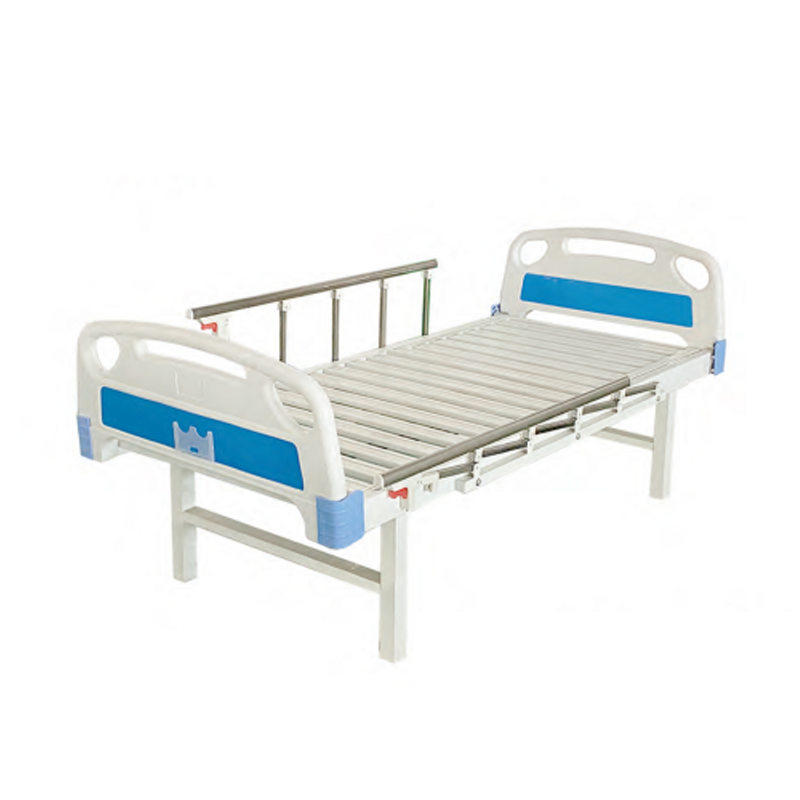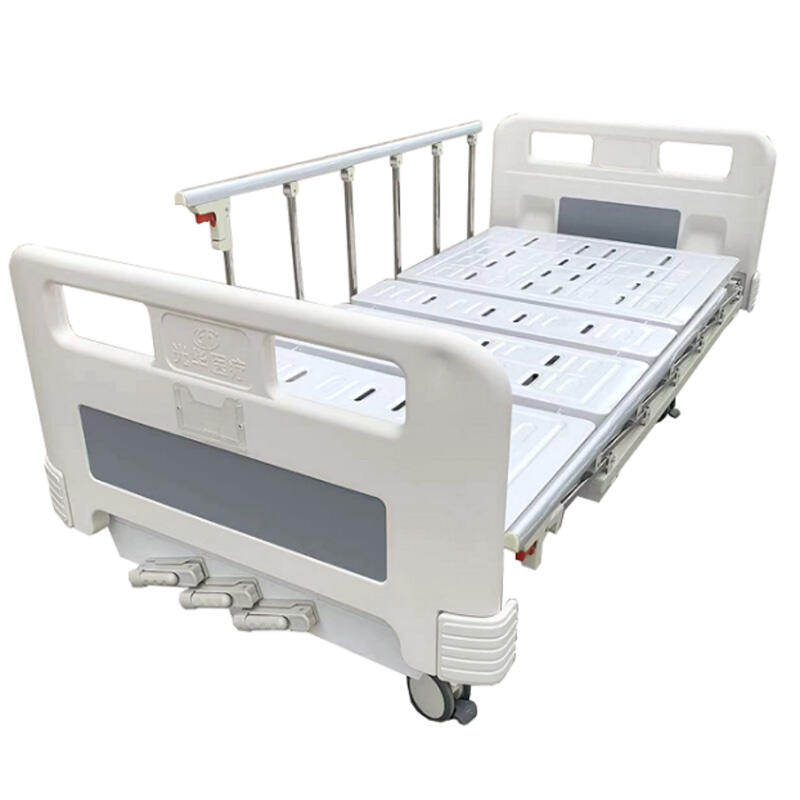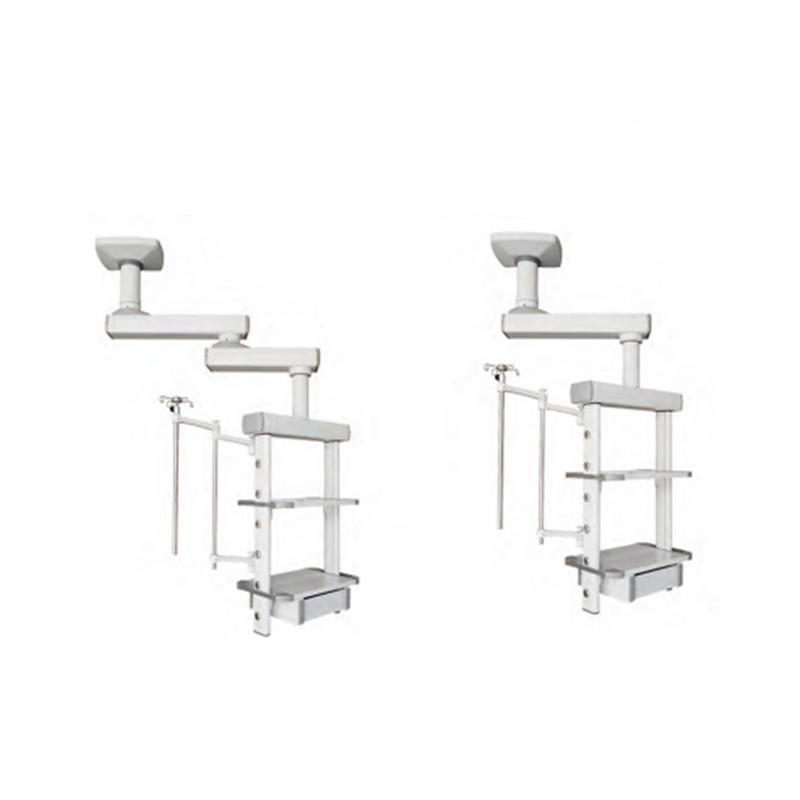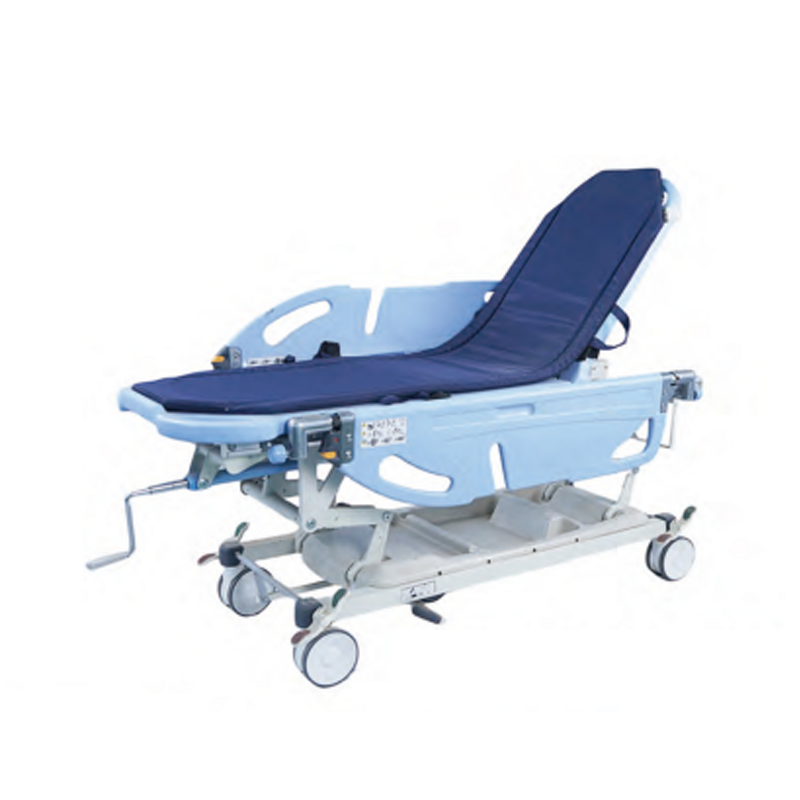Essential Functions of Hospital Stretchers in Emergency Care
Ensuring Rapid Patient Mobility in Critical Situations
Hospital stretchers are essential to the rapid transport of patients, particularly in emergency situations. They are designed to easily move patients to other points of care, which is needed according to research conducted by the American College of Emergency Physicians. These studies provide evidence that prompt measures may lead to improved survival in CC environments. The unique design and functionality of security grades makes hospital stretchers perfect for use in cramped, heavy-trafficked, or compact spaces with minimal space to maneuver, all while maintaining comfort and safeguarding patient security. This amalgamation of form and function helps patients get out of bed the next day, a key component of their healing process.
Integration with Medical Equipment for On-the-Go Care
Mobility isn't all there is to hospital stretchers; emergency patients need the convenience of the medical equipment's-operating attachment as well. Such stretchers often are equipped with connections for monitors, IV poles, and oxygen tanks to allow the continued provision of life-saving treatment while en route to the medical facility. This acute care ‘in motion’ reduces delay that could result in a deterioration of the patient. Manufacturers make sure that stretchers accommodate all basic medical devices for immediate help during emergency situations. This integrated model allows for the uninterrupted delivery of essential medical care, minimizing patient health risks and ensuring a smooth and efficient medical response.
Innovations in Medical Stretcher Design
Electric Hospital Beds: Transforming Emergency Response Efficiency
Electric Hospital Beds are changing the way we manage patients, allowing for EZ patient positioning for any situation Electric Hospital Beds are the future of patient care. These beds have improved technology that makes adjusting the height and position of patients easy, allowing these beds to adjust to the patient, not the other way around! Global Electric Hospital Bed sector is growing significantly due to rapid innovations in the patient care processes which includes various trends and opportunities. It has been proven that electric beds do not only facilitate a safer physical environment for health workers, but also result in faster reaction times in critical care, ultimately maximizing emergency response and the sound efficiency of emergency care. Electric hospital beds are therefore an essential part of modern healthcare, ensuring immediate, constructive medical attention at the right place and at the right time.
Adjustable Mechanisms for Diverse Clinical Needs
Adjustable mechanisms in contemporary stretchers provide an exceptional flexibility for addressing different clinical requirements. This versatility is vital in emergencies when patients come in all shapes and sizes needing personalized transport solutions. Studies done at medical facilities suggest that with better patient transport care by meeting various needs, these stretchers do enhance the quality of patient management. Attributes such as height adjustment, tilt and lateral slide contribute to medical efficiency, surgical precision, and patient comfort. With these functions, adjustable hospital beds guarantee that health practitioners offer accurate and efficient care, as they hold patient safety and comfort in the highest regard. The performance of the adjustable stretchers would provide irreplaceable support in the dynamically changing emergency medical scene.
Key Hospital Stretcher Models for Emergency Use
Single-Crank Bed with Bars: Heavy-Duty Emergency Solution
The Single-Crank Bed with Bars is a practical emergency bed option with metal bars and one-crank that makes for easy head of bed, foot of bed or bed height adjustments with just a handle. This is particularly important during high-stress situations, such as where speed and reliability can make the difference between rapid care of a patient and very slow care. With sturdy side rails, these beds provide increased safety for a patient which is especially important as patients may be confused during an emergency move. The heavy duty base is designed to survive even when weights are increased; these beds are ready to work when ease of storage is a priority.
Three-Crank Bed with Advanced Lifting Capabilities
Three-Crank Bed would be perfect for hospitals who needs a adjustable bed that can be positioned. These beds include dozens of adjustments that meet multiple clinical needs, and increase the ability to deliver quality care, and all of them are to help reduce the risk of skin breakdown. These attributes are vital for patients requiring continuous surveillance or special positioning to prevent complications. Industry experts consider that this superior lifting capacity greatly improves operational efficiency, in particular within emergency rooms and operating theatres, as it ensures the best possible freedom of movements for medical executives who need to work efficiently and comfortably around the patient.
Suspension Tower Systems for Trauma Management
Suspension Tower Systems are intelligent designs for the management of trauma and are state-of-the-art with superior stabilization capabilities. There are rapid deployment system for trauma, for use in trauma settings where quick interventions are life saving. Rapid availability minimises setting changes on equipment, thus enabling accelerated response times and reducing the burden on healthcare staff. Studies point to the benefits of better emergency healthcare that comes with specialized gear such as suspension towers which can improve response times for trauma and ultimately patient care in intensive care scenarios.
Ward Transfer Vehicle for Safe Patient Relocation
Ward Transfer Vehicles lead the market with safety for patients at the forefront of the design, making sure that patients are moved in a smooth and secure manner between areas of hospital. They have internal restrainers that keep them in place and specially designed wheels for traversing hospital hallways. Healthcare studies have shown that such elements help to decrease the chances of falling and improve patient satisfaction during transfers. The focus on safety and patient comfort offered by ward transfer vehicles ultimately reduces injury risk, and allows patients to be transported without any need to compromise their health or dignity.
Safety and Patient Outcomes
Hospital Bed with Side Rails: Preventing Falls During Transport
The inclusion of side rails for hospital stretchers is a vital safety precaution which greatly minimizes the risk of falling while being transferred. These fall prevention devices are a necessity for health care providers, as emphasized by several patient safety organizations, especially when dealing with patients who are more susceptible to this due to their health status. This, in turn, means that adding side rails is not only a preventative measure, but a measure of compliance with safety regulations, which assures both hospital staff and patients as patients are transferred. Not only to keep the patient safe, but to provide peace of mind to all involved in the patientâs care.
Weight Capacity Standards in Emergency Stretchers
Following the weight capacity guidelines for emergency stretchers is important for the safety of the patient and the longevity of the product. Minimum and optimal capacities are defined by industry regulations to reduce the risk of equipment damage during transport. A failure can have a catastrophic impact on a patient, thus we want to be sure these standards are upheld. Data from your hospitals shows that following that weight limit makes all the difference - signalling that it's action in emergency that counts, rather than that nonsense about guidelines. There is the opportunity to significantly enhance patient safety and the effectiveness of out-of-hospital transportation by promoting the understanding and use of these standards.
Challenges in Emergency Stretcher Deployment
Navigating Tight Spaces with Specialized Equipment
Transport of the standard stretcher in narrow spaces is a major obstacle in emergencies. Transporting these vital tools through confined halls and doorways calls for equipment that is able to maneuver easily, while keeping the patient from harm. In high-stakes environments, health care providers look for tools like smaller, more-sleek stretchers designed to navigate tight spaces. Studies of model navigations through health care environments demonstrate the significance of adequate training to use specialized models efficiently, as these can greatly reduce navigation problems and enhance patient care.
Maintaining Infection Control Under Pressure
Maintaining high standards of infection control during disasters is necessary for patient safety but can be difficult to maintain. Various stretcher designs include things like easy-to disinfect surfaces and special covers, created to support an infection control policy even under the most challenging of circumstances. Recommendations from experts underscore the need for compliance with established infection control measures to avoid outbreaks, particularly during peak hospital emergency situations. The value of reliable infection control efforts can help reduce risks and keep patients and providers safe in quick response, emergency scenarios.





